NFMart Token Risk Calculator
NFM Risk Assessment
Based on current market conditions and project status
Risk Results
If you’ve seen NFMart (NFM) pop up on a crypto tracker and wondered if it’s worth your time, you’re not alone. The token has been floating around in the lower reaches of CoinMarketCap for years, sometimes bouncing up with a 700% daily spike, then crashing back down. But what’s it actually for? Is NFMart a real project or just another speculative gamble? Let’s cut through the noise.
What NFMart (NFM) actually does
NFMart isn’t another meme coin chasing viral trends. It’s built as a platform to let anyone-artists, small brands, even hobbyists-create their own NFT marketplace without writing a single line of code. Think of it like Shopify, but for NFTs. Instead of listing your art on OpenSea or Rarible, you could launch your own branded store with your own rules, fees, and community. That’s the promise. The NFM token is the fuel for this system. You’d use it to pay for marketplace setup, custom features, or transaction fees within the platform. The idea is simple: lower the barrier so creators don’t need a dev team to enter the NFT space. But here’s the problem: almost no one is using it.Supply and market numbers: The cold hard facts
NFMart has a total supply of 10 billion tokens-and all 10 billion are in circulation. That’s unusual. Most projects lock up a big chunk to control inflation. NFMart didn’t. That means every single token was released from day one. As of October 2025, the market cap sits around $151,000. That’s tiny. For comparison, even the smallest legitimate blockchain projects usually start at $10 million. NFMart is in the micro-cap zone, where prices swing wildly on a single large trade. Trading volume? Around $200,000 per day. Sounds high? Not when your market cap is $150K. That means the entire market value turns over more than once a day. That’s not adoption-it’s speculation. People aren’t buying NFM to use the platform. They’re buying it because they think someone else will pay more tomorrow.Price chaos: Why numbers don’t match across sites
Check CoinMarketCap: $0.00002658. Check Coinbase: $0.00000290. Check Binance: $0.000009. CoinCarp says $0.00004052. Which one’s right? They all are-and none of them are. NFM trades on dozens of small, decentralized exchanges with almost no liquidity. A single wallet moving 50 million tokens can spike the price 200% in minutes. Then, as soon as that wallet sells, it crashes back down. This isn’t market efficiency. It’s manipulation waiting to happen. The all-time high? $0.0014. That was back in 2022, during the NFT boom. Today, it’s down 99.79%. That’s not a correction. That’s a collapse. And it’s not because the market turned. It’s because the project failed to deliver.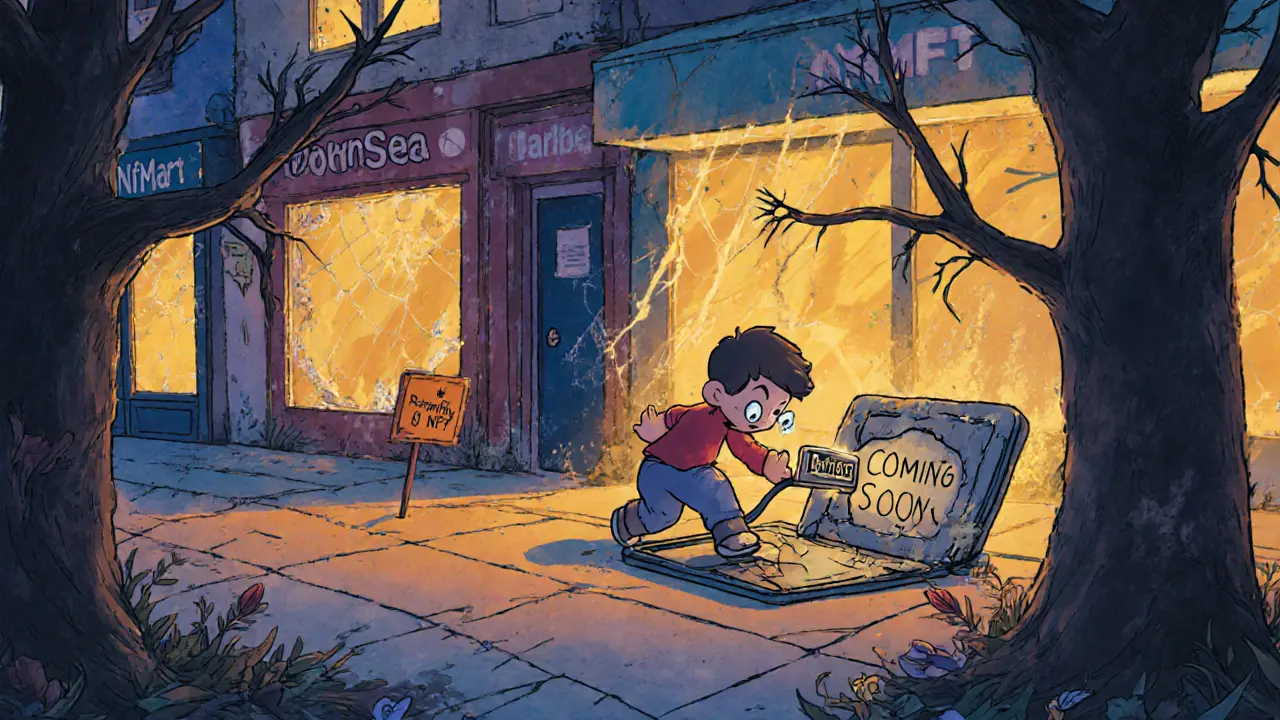
Who holds NFM? And why?
CoinMarketCap says there are 6,880 holders. That’s less than the number of people who follow a mid-tier Twitch streamer. For a token that claims to empower creators, that’s a ghost town. There’s no active developer blog. No GitHub commits. No roadmap updates. No press releases. No community events. The official website looks like it was built in 2021 and never touched since. The social media accounts post price charts with hashtags like #ToTheMoon and #NFMartRising-classic signs of a project running on hype, not progress. The only people actively trading NFM are day traders hunting for quick 10x moves. No artists. No brands. No creators. Just speculators.Why NFMart isn’t competing with OpenSea
You might think NFMart is trying to beat OpenSea or Blur. It’s not. It’s trying to compete with tools like Mirror, Genie, or even Shopify’s NFT plugins. But those platforms have real teams, real funding, and real users. NFMart has no public team. No whitepaper with technical details. No API documentation. No developer support. How are creators supposed to build on it if they can’t even find how to connect a wallet? The concept isn’t bad. The execution? Nonexistent.Is NFMart a scam?
Not technically. There’s no evidence of fraud. The token exists. The contract is live. The supply is public. But it’s a classic case of a project that ran out of steam. It raised attention during the 2021 NFT frenzy, launched its token, and then vanished. No product launch. No marketing. No updates. Just a price chart that dances to the rhythm of pump-and-dump groups. It’s not illegal. But it’s not a project you should invest in unless you’re okay with losing everything.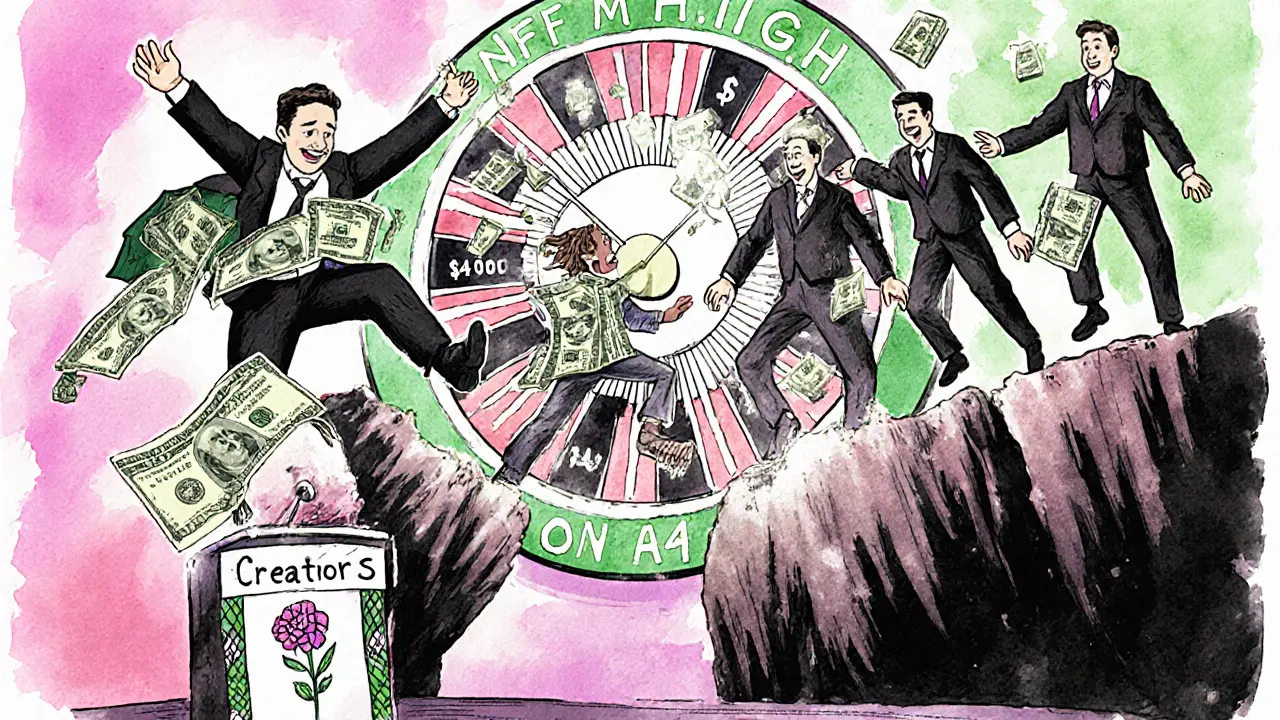
What do price predictions say?
WalletInvestor predicts NFM will drop to $0.00001338 by December 2025. Other models suggest it could rise to $0.000006. But here’s the truth: no one knows. For a token with $150K market cap and $200K daily volume, predictions are meaningless. Technical indicators like RSI or moving averages don’t work here. There’s no real demand. No institutional interest. No utility. Just noise.Should you buy NFMart (NFM)?
If you’re looking for a long-term investment? No. If you’re a trader chasing volatility? Maybe-but treat it like a lottery ticket. Put in money you’re willing to lose. Don’t DCA. Don’t hold. Buy, watch, sell fast-or don’t buy at all. If you’re a creator hoping to launch your own NFT store? Look elsewhere. Try platforms with real support, active communities, and actual users. NFMart won’t help you.Final takeaway
NFMart (NFM) started with a good idea: letting creators own their NFT marketplaces. But ideas don’t matter if no one builds them. The token is a ghost. The platform is dead. The price swings are just echoes of a dead hype cycle. This isn’t the next big thing. It’s a cautionary tale.Is NFMart (NFM) a real cryptocurrency?
Yes, NFMart is a real token with a live blockchain contract and public supply. But being real doesn’t mean it’s functional. It has no active development, no real users, and no working platform. It exists as a tradable asset, but not as a usable product.
Can I use NFM to create my own NFT marketplace?
Not right now. The NFMart platform doesn’t appear to be live. There are no tutorials, no sign-up pages, no documentation, and no way to connect a wallet to build a store. The website shows no updates since 2022. Unless the team suddenly reappears with a working product, you can’t use NFM for its intended purpose.
Why is the price so different on different exchanges?
NFM trades on low-liquidity exchanges with minimal trading volume. A single large buy or sell order can swing the price dramatically. This isn’t normal market behavior-it’s manipulation. Prices on Binance, Coinbase, or CoinMarketCap differ because each exchange has its own tiny pool of buyers and sellers, and none of them are big enough to stabilize the price.
Is NFMart worth investing in for the long term?
No. The project has shown zero progress since 2022. There’s no team visibility, no product updates, and no community growth. The 99.79% price drop from its all-time high isn’t a market correction-it’s a death spiral. Long-term holding here is gambling, not investing.
How many people hold NFMart tokens?
As of October 2025, CoinMarketCap reports 6,880 holders. That’s fewer than the number of people who attend a small local art fair. For a project claiming to empower creators, this is an alarmingly small number. Most legitimate crypto projects have tens of thousands of holders within their first year.
Does NFMart have a whitepaper or technical documentation?
No. There is no publicly available whitepaper, developer documentation, or technical specifications. No GitHub repository. No API details. No smart contract audit reports. This lack of transparency is a major red flag for any blockchain project claiming to be infrastructure.
What happened to NFMart after the 2021 NFT boom?
After the NFT hype peaked in 2021, NFMart disappeared. It launched its token, got some initial attention, and then went silent. No product updates. No marketing. No community engagement. The team stopped posting. The website froze. The token’s price crashed as interest faded. It’s a textbook example of a project that rode a wave but had no boat to sail after it broke.
Can NFMart recover in 2026?
It’s possible-but only if the team suddenly reappears with a working product, real funding, and a clear roadmap. Right now, there’s zero evidence they’re doing anything. Recovery would require rebuilding trust from scratch, attracting developers, and convincing creators to use a platform that’s been dead for years. That’s a massive uphill climb with no signs of momentum.
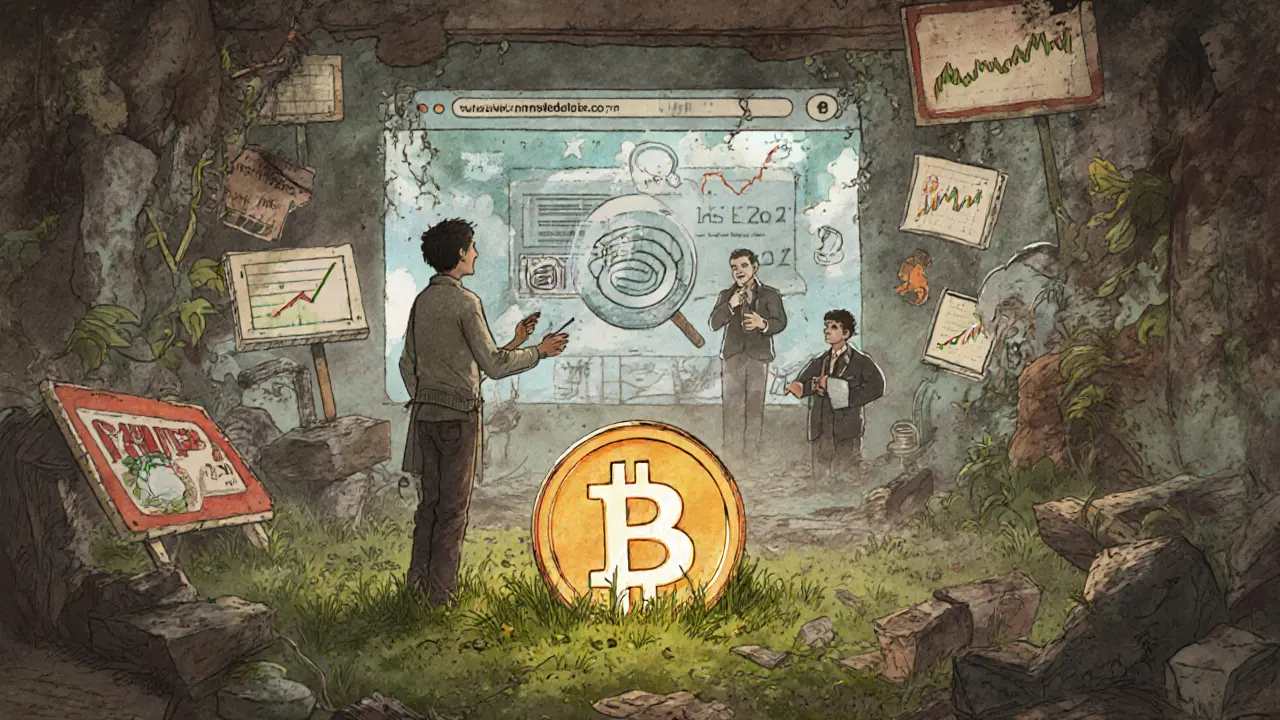
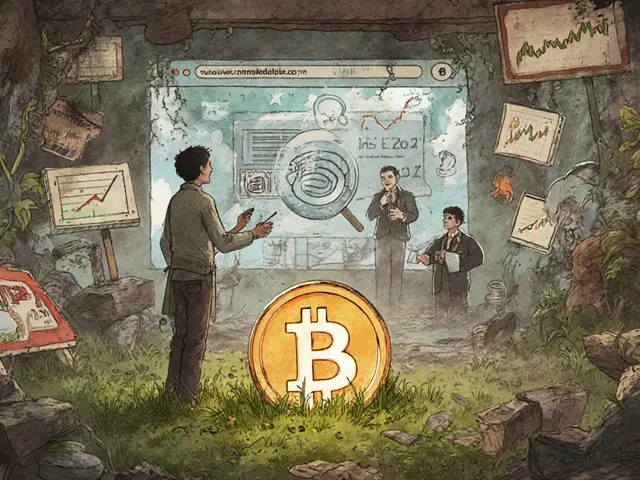


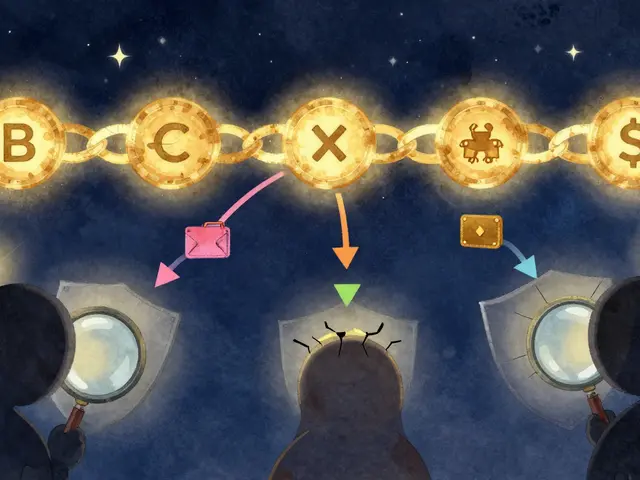
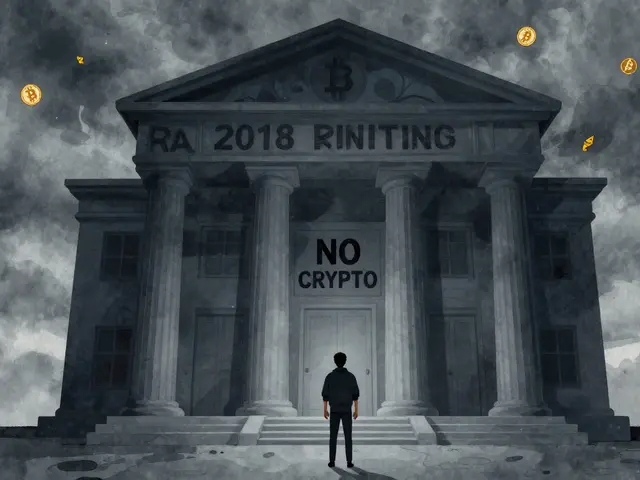
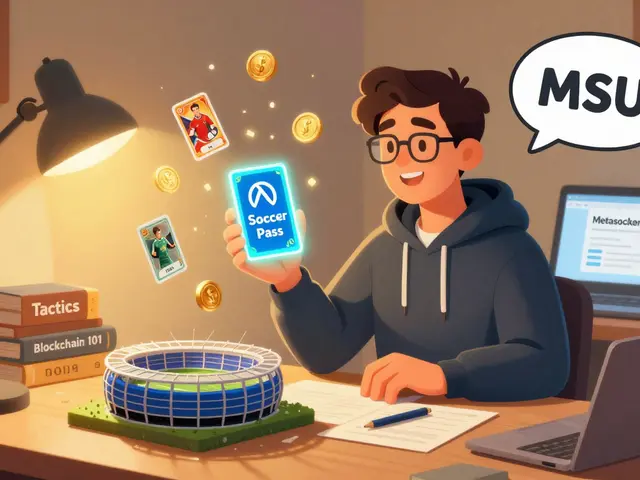
gerald buddiman
November 5, 2025 AT 13:31This is the most accurate breakdown of NFMart I’ve ever read… I mean, seriously, $150K market cap and 6,880 holders? That’s less than my local coffee shop has regulars. And the price differences across exchanges? It’s not a market-it’s a carnival ride rigged by bots. I’ve seen pump groups do this to dog coins, but this is next-level ghost town energy. I’m not even mad, I’m just… sad for the creators who thought this was real.
Arjun Ullas
November 6, 2025 AT 02:30It is imperative to note that the absence of a whitepaper, developer documentation, and smart contract audit renders this token fundamentally non-compliant with the minimal standards of blockchain transparency. The liquidity anomalies and price manipulation are not incidental-they are systemic failures indicative of a project that has abandoned all fiduciary responsibility. Investors who engage with such assets do so at their own peril, and regulatory scrutiny is not a matter of if, but when.
Steven Lam
November 6, 2025 AT 16:06Sierra Rustami
November 7, 2025 AT 11:51USA invented the internet. This? This is what happens when you let amateurs run a blockchain. We built Google. We didn’t build this ghost town. If you’re investing in NFMart you’re not betting on crypto-you’re betting on American decline.
andrew seeby
November 7, 2025 AT 20:28bro i checked nfm like 3 times this week just to see if it went to the moon 🤡 the last time it jumped 200% i thought i was rich… then i checked 2 hours later and i was back to zero. i think i just paid $15 to watch a cartoon of a coin dance. worth it? maybe. smart? absolutely not. but hey… at least i got a laugh 😅
Eric von Stackelberg
November 8, 2025 AT 12:07Let me ask you this-how many of these exchanges are owned by the same anonymous group? The price discrepancies? The sudden 700% spikes? The fact that the website hasn’t been updated since 2021? This isn’t market inefficiency. This is coordinated manipulation. Someone is using NFMart as a honeypot. They’ve already taken the money. The only question is: who’s pulling the strings? And why hasn’t the SEC shut this down yet?
Michelle Sedita
November 9, 2025 AT 22:54I appreciate how thoroughly this post dismantles the illusion of NFMart. It’s heartbreaking, really-because the idea was beautiful. A Shopify for NFT creators? That could’ve changed everything. But without execution, vision is just noise. I’ve seen this pattern too many times: brilliant concept, zero follow-through. It’s not that people are lazy-it’s that they mistake hype for progress. And that’s the real tragedy.
Cydney Proctor
November 11, 2025 AT 20:58Oh wow. A project so underwhelming it makes DeFi look like a Nobel Prize ceremony. NFMart is the crypto equivalent of a PowerPoint deck titled 'Future of Web3' that was never turned into a website. How does anyone take this seriously? I’m not even sure if the team is still alive. I wouldn’t be surprised if the founder moved to Bali and now sells coconut water while laughing at the fools who still check the price chart.
Kathy Ruff
November 12, 2025 AT 04:03I’ve been in crypto since 2017 and I’ve seen a lot of dead projects. But NFMart is one of the quietest. No drama. No drama queens screaming ‘TO THE MOON’. Just… silence. That’s what makes it sadder than the loud ones. No one’s even mad anymore. They just moved on. And honestly? That’s the most honest death a crypto project can have.
Evan Koehne
November 13, 2025 AT 15:13So let me get this straight-you’re telling me a token with zero documentation, zero team, and zero users is being traded like it’s Bitcoin? That’s not a market. That’s a collective hallucination. The only thing NFMart is good for is proving that humans will pay real money to chase shadows. I’m not even mad. I’m impressed.
Vipul dhingra
November 15, 2025 AT 13:18Jacque Hustead
November 16, 2025 AT 10:54I just want to say thank you for writing this. So many people are still buying this thinking it’s a hidden gem. But you laid it out so clearly-it’s not a coin, it’s a tombstone. I’ve shared this with my friends who were about to dump their savings into it. You saved them from a bad decision. That’s real value.
Robert Bailey
November 17, 2025 AT 05:17Wendy Pickard
November 18, 2025 AT 17:25I read this whole thing and I just felt… tired. Not angry. Not excited. Just tired. Like watching a house burn down and knowing no one’s inside, but the fire department never showed up. That’s what NFMart is. A slow, quiet collapse. No villains. No heroes. Just… silence.
Jeana Albert
November 19, 2025 AT 04:04HOW DARE YOU SAY THIS ISN’T A SCAM?!?! I LOST MY ENTIRE SAVINGS ON THIS AND YOU CALL IT A 'CAUTIONARY TALE'?!!? WHO DO YOU THINK YOU ARE?!?! I WAS PROMISED A REVOLUTION AND ALL I GOT WAS A 99.79% DROP AND A WEBSITE THAT LOOKS LIKE IT WAS BUILT IN 2008!!! I WANT MY MONEY BACK!!!
Natalie Nanee
November 19, 2025 AT 04:35People like you are the reason crypto is dying. You don’t believe in the vision. You don’t support the underdogs. You just sit there and call everything a scam. What if NFMart is just quiet because they’re building something bigger? Maybe you’re the problem, not the project.
Angie McRoberts
November 20, 2025 AT 18:50It’s weird how the most honest crypto projects are the ones that die quietly. No drama. No shouting. Just… fading. NFMart didn’t get hacked. Didn’t get rug-pulled. It just… stopped. And that’s actually kind of beautiful in a sad way. Some ideas aren’t meant to survive. Maybe that’s okay.
Chris Hollis
November 22, 2025 AT 06:08Diana Smarandache
November 23, 2025 AT 17:21It is not merely a failure of execution-it is a failure of moral and intellectual responsibility. To launch a blockchain project without transparency, without accountability, and without a single line of code updated in three years is not negligence. It is an affront to the entire ethos of decentralized innovation. This token should be delisted from every exchange. Not for regulation’s sake-for dignity’s.